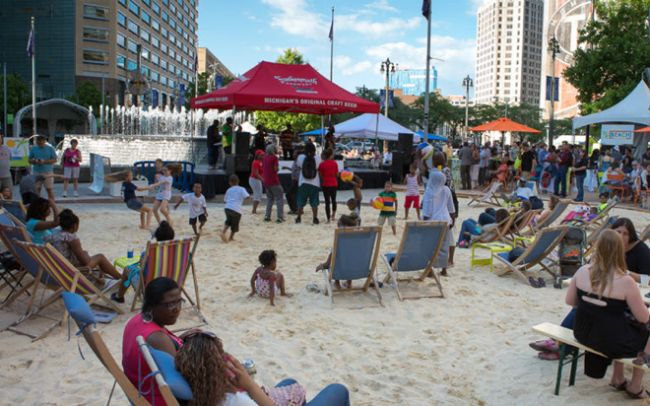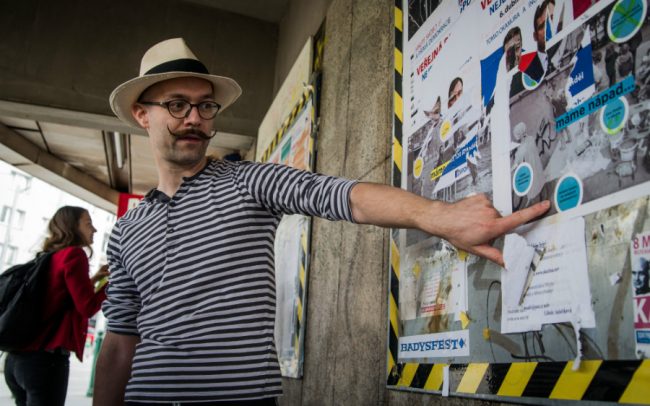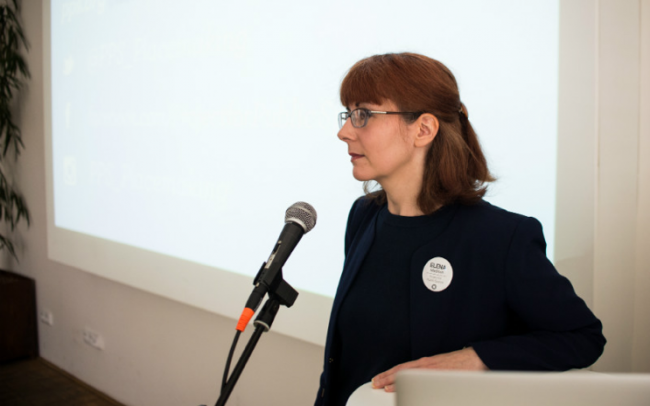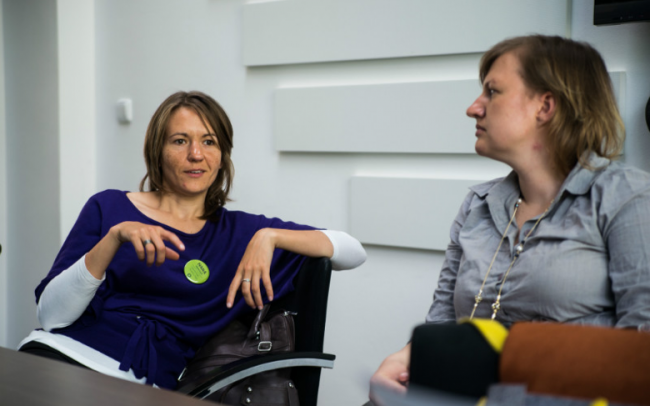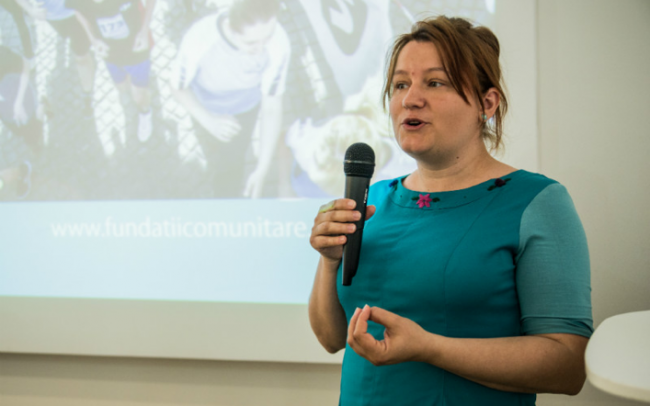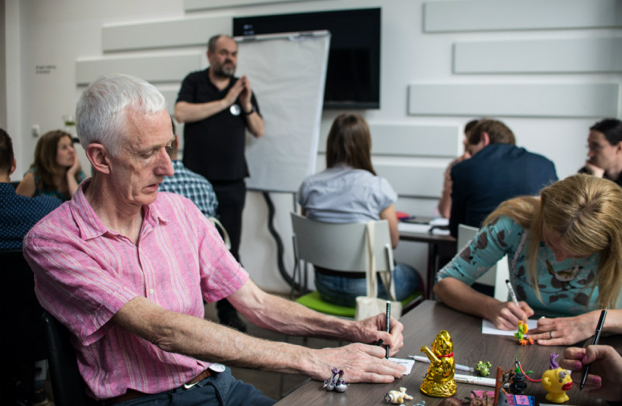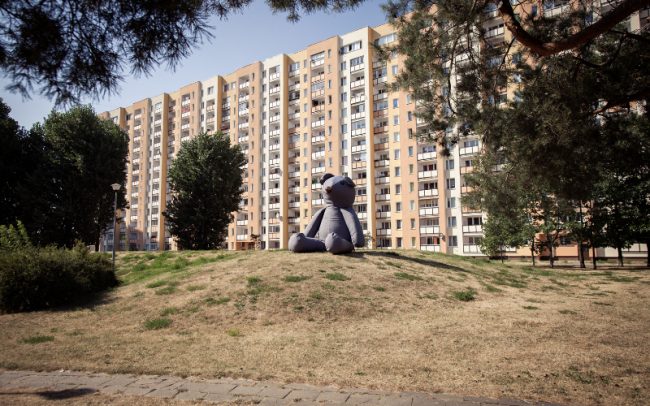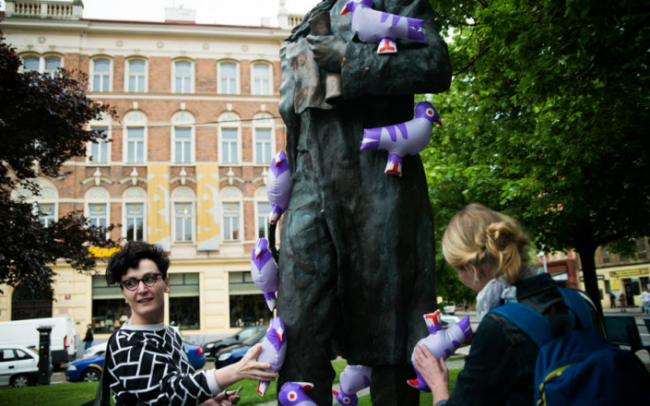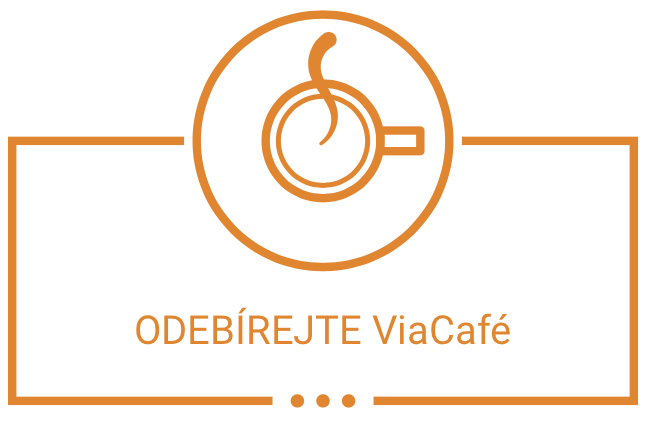About people actively engaged in improving their communities
What do residents of an old, inland industrial city like Detroit want most of all in their new public square? It would probably not occur to any architect that the answer is not a fountain or park. In fact, what they miss most of all in their city is a beach!
“Detroit got its beach because local residents planned it together,” explained Elena Madison of the NYC-based organization Project for Public Spaces, which implemented the transformation of a public space in downtown Detroit that now includes a seasonal beach.
Elena Madison was one of the guest speakers at our recent three-day Community Forum in Prague titled “Come On, Community!” She was joined by hundreds of individuals from across Europe who are working to improve their own communities. “Come On, Community!” was not a conventional conference. Each participant is striving to engage his or her community in one way or another – and that means each of them had something interesting to share.
We organized the Community Forum as part of our program ViabilityNet 2.0, which offers continuing education and networking connections to community leaders from Central and Eastern Europe. ViabilityNet 2.0 is generously supported by the Charles Stewart Mott Foundation based in Flint, Michigan. The forum included dozens of workshops, several presentations and a participatory session called Open Space. This session included small groups of participants who addressed various issues that they had selected themselves and then came up with a flurry of ideas for community improvement projects.
People shaping their city for people
“Placemaking” is a fashionable word. It can be summarized as a community planning process that focuses on creating a design for an identified space that serves the needs of the public. For example, thousands of residents were engaged in the community planning process to transform an unsightly space into a new public park in Detroit. The seasonal beach they incorporated into the project serves as an ice skating rink in winter and the park has given rise to many other activities where people can meet and spend time together.
Elena Madison, Vice President of Project for Public Spaces, works in community public space planning in the U.S.
How can people change unfriendly cities into livable and lively places? Elena Madison presented the “Power of 10+” concept for starting the change process. This concept is about finding at least 10 places to change in a community according to residents’ needs. Project for Public Spaces facilitators then work with local residents to create at least 10 opportunities for community building activities such as food stands, giant chess boards, a campfire circle or a curling rink. Who are the experts that decide which activities would be best for engaging local residents? The locals themselves, of course!
Finding hope in Moldova
Listening to Mariana Seremet talk about contemporary Moldova makes you think that it’s like the Czech Republic in the wild 1990s – only worse. Nobody trusts each other and everyone feels as if there is no point in trying to do anything for their community because the outcome is always the same: corruption, politicians dismissing the idea, a hideous apartment building is built instead of a park.
Mariana Seremet tries to engage community members in making changes. At the center of her city lies a small park which previously was slated to become part of a modern boulevard. Times changed, however, plans lay in drawers gathering dust and the site remained underused and full of litter. Mariana is engaging local residents in a community planning process to transform the site and create a positive example that will show other people that it is possible to make change. She believes that positive examples have the power to change Moldova for the better.
What will make changes happen? People, time and YOU
People like Mariana are often alone in their efforts. They lack funding and, moreover, success does not always materialize quickly. Some residents may not understand the goals of the project. ARC Foundation in neighboring Romania supports projects that actively engage people in improving their communities. Alina Porumb, Director of Philanthropy Programs, has been working on engaging people in community development projects for years.
People, time and YOU! According to Alina Porumb, “These are the three prerequisites that breathe life into a community. You can’t do anything without people and it’s always necessary to devote more energy than you originally anticipated. Creating a functioning community takes patience and takes more time than you thought it would.
Miracles, heroes and childhood dreams can connect people
There are many ways to connect people. Dušan Ondrušek is the founder of the organization Partners for Democratic Change Slovakia (PDCS). He uses conflict resolution techniques in places where relationships between people are stressed or problematic. In his opinion, using the guidelines of addressing Strengths, Weaknesses, Opportunities and Threats (SWOT) analyses, and other conflict resolution theories, sometimes work very well. However, sometimes it’s better to throw methodology out the window and use metaphors, storytelling or even fairy tales to address a community problem.
Fairy tales
Everyone has had childhood dreams about heroes and miracles. These dreams can often show us unexpected things. How can fairy tales be used to resolve gridlocked situations or show reality as it really is? At the Community Forum people had a chance to try one of Dusan Ondrusek’s approaches to problem solving. First they drew a picture of their favorite childhood scene and then reflected on a real-life problem that they projected into the scene. For example, a castle became a town hall, a king became a mafia ringleader and villagers were transformed into the helpless public. Participants then brainstormed solutions to the problems depicted in the fairy tale scenes.
When a giant lizard appears in your courtyard
“I want to shake people out of their everyday complacency,” says Iza Rutkowska, talking about the giant stuffed animals she takes along on her travels. Recent trips have included cities in her native Poland and adjacent countries with a trip to Afghanistan planned in the near future. During these trips, Iza spends one day in the given city installing one of her giant toys in a public space to create attention for a needed community project. According to Iza, “Giant toys are not only fun, they can serve as a means for bringing people together and shaping community identity.”
Here is her giant bear (above) in one courtyard in a poor neighborhood in the city of Wroclaw, Poland.
To our Community Forum she brought these inflatable pigeons (above), which were poised to fly out over Prague.
We would like to thank everyone who took part in our first Community Forum. We have a good feeling that the event is going to become a tradition and we look forward to more inspiring encounters with community leaders from the CEE region next time!
Photos by: Anna Šolcová, Via Foundation archives and Iza Rutkowská’s archives

